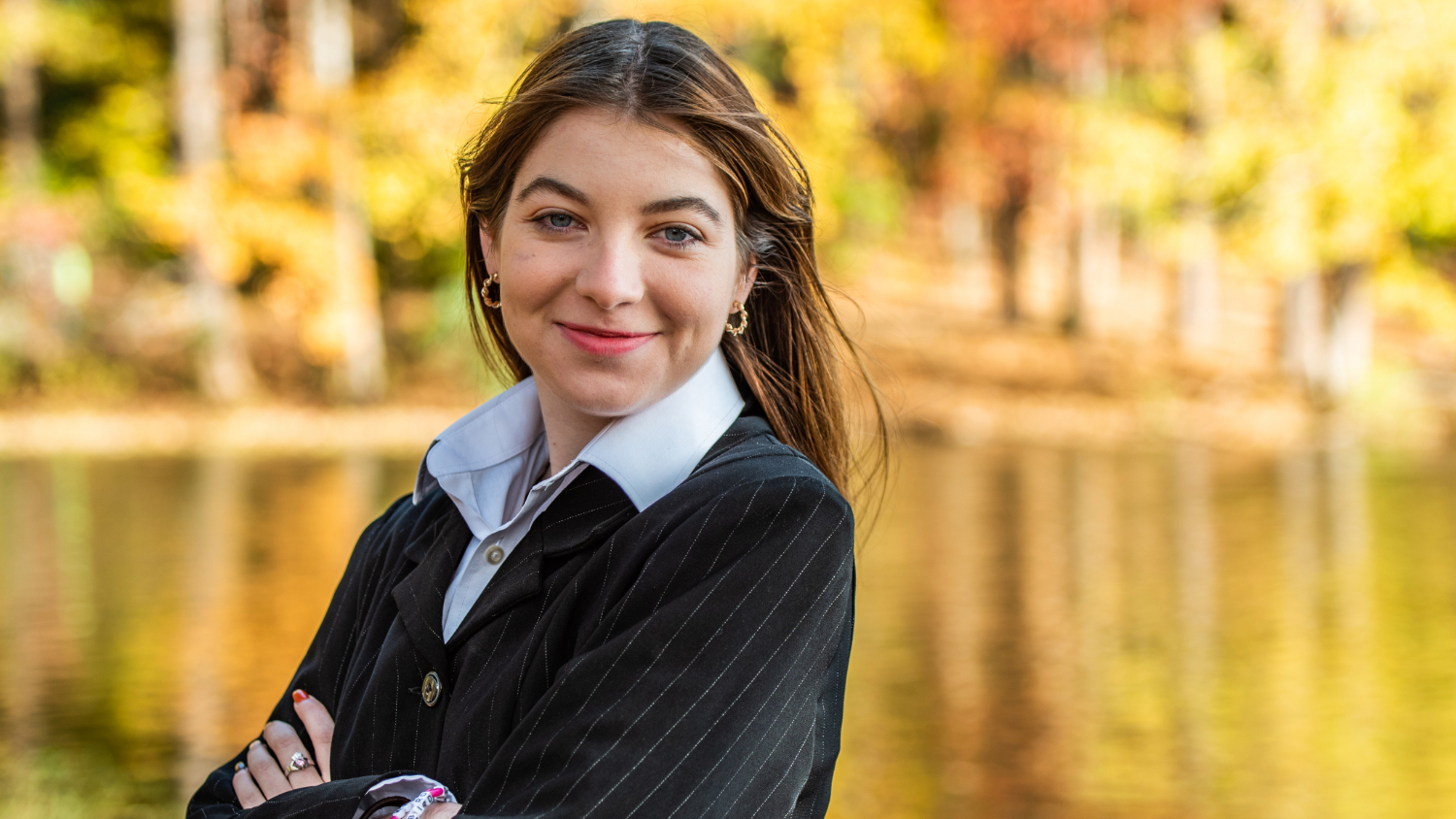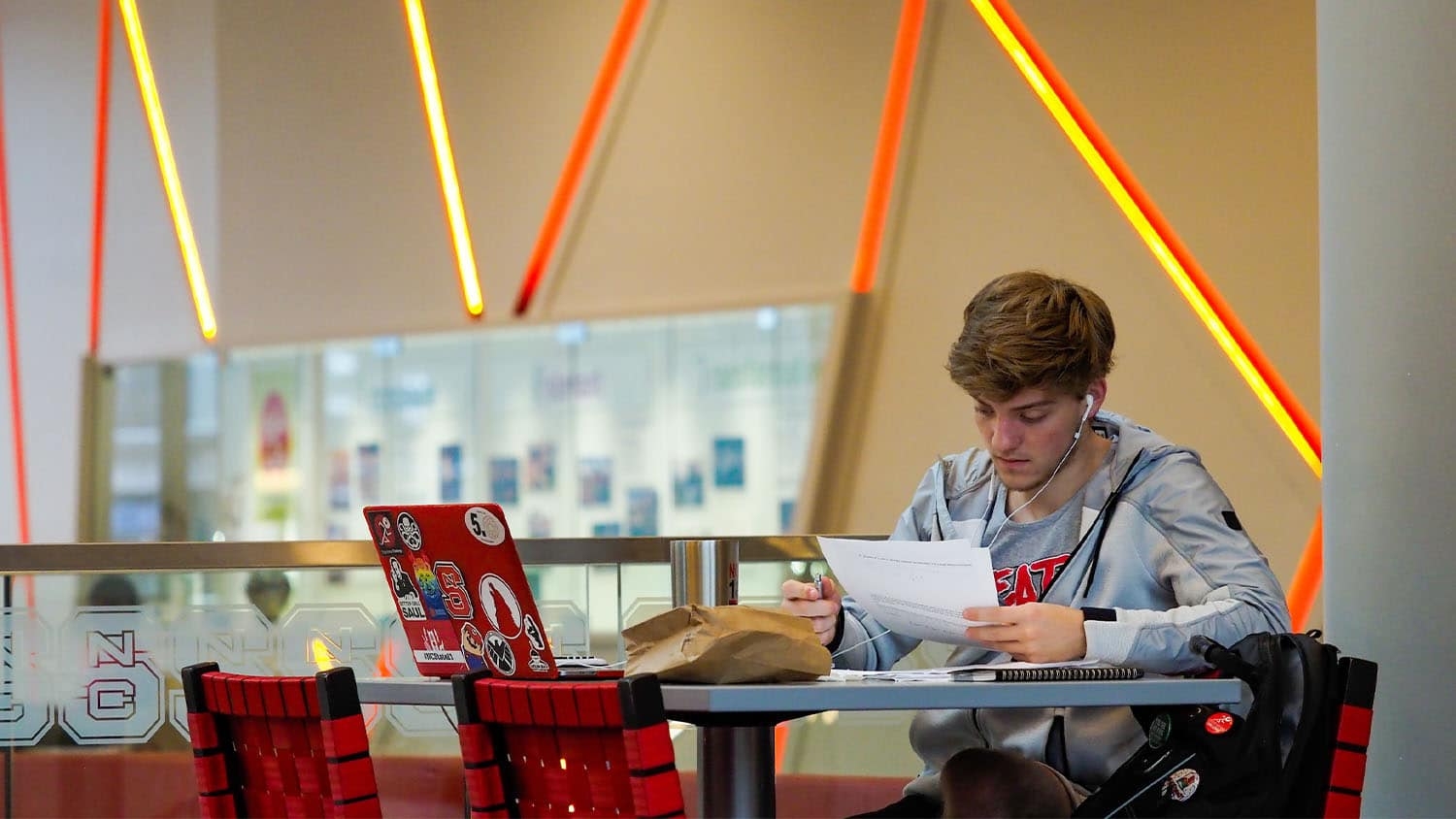CHASS Alumnus Has a Heart for the Underdogs

Jon Powell never considered going to law school until his North Carolina State University communication professor, Dr. Ed Funkhouser, mentioned that one of his other communication students was taking that route. Today, Powell is the Director of Campbell Law School’s Juvenile Justice Project.
“Sometimes there are circumstances that people can’t do anything about and they need somebody to come alongside them and help them. That’s what I try to do,” says Jon Powell, director of Campbell Law School’s Juvenile Justice Project.
Jon Powell ’98 JD loves education. But if you knew him when he was 17 years old, he said, you’d probably laugh at this proclamation. At that age, the Garner, N.C., native was a student at East Carolina University and not doing so well in school. He was put on academic probation; and within a few weeks of the start of his sophomore year, he dropped out. He took a job with Carolina Power & Light and got married. His wife, Lisa, encouraged him to go back to school. For the next 10 years, while working full time, he took night classes at North Carolina State University. In 1995, he earned a bachelor’s degree in communication. “Going back as an adult made all the difference,” Powell said. “I fell in love with education. I couldn’t get enough.”
He went on to earn a law degree from Campbell University and practiced criminal law for several years. Today, he’s director of the Juvenile Justice Project, a collaborative effort between Campbell Law School and the N.C. Governor’s Crime Commission that he co-founded in 2003. The clinic is a victim-offender mediation program that mediates about 80 cases a year involving juvenile offenders referred by the court system. The clinic also works with the Wake County Public School System, where it will have established mediation programs in up to eight schools by the end of the 2012-13 academic year.
Powell spoke to Campbell.edu about his career in law, why he has a heart for underdogs, and what he hopes students learn from him. The following is an edited transcript.
How did you end up in law?
In the last couple years of undergraduate work, I started thinking about graduate work. I had a communication professor, Dr. Ed Funkhouser, who told me he had a student who was a communication major and who went on to be a lawyer. That fit well in my thinking, because I knew that I loved people and that I wanted to work with people. When he said law school, it got in my mind, and it was the one thing I couldn’t shake. I must also say that I’ve always been a spiritually-led person. I began to feel like I was being led to law school.
Why did you attend Campbell Law School?
It was a Christian school, which I felt fit my calling very well. The other thing was that my father-in-law was raised in Buies Creek, and he owned a little house over here right across the street from the law school. We renovated the little house and moved in.
What drew you to practice criminal law?
I went to law school not really knowing what I was going to do. When people asked me what I was going to do, I would tell them: “I don’t know. The only thing I know for sure is that I’m never going to practice criminal law.” And, of course, that is exactly what I started doing. That was my first summer job. That was my second summer job. And then that was really all I wanted to do when I got out of school.
Why is that?
It fits my personality. Not because I love crime, but for two reasons. First of all, I’m a list person. On Saturdays, I have a list; and when I finish a project on the list, I cross it off. I get a lot of pleasure from that. The elements of criminal law are the same; to prove a crime you have to prove elements. The second thing is that I have always pulled for the underdog.
Why the underdog?
I have thought a lot about this. I think the answer to that is that I had a brother , Timmy, who was severely mentally retarded. He could not be cared for at home. His greatest accomplishment, physically, was to sit up and be able to play with a rattle or something. He couldn’t speak, he couldn’t feed himself, he couldn’t comprehend that we were family. He died when I was 18; he lived to 16. To have a brother with that condition helped me understand that sometimes there are circumstances that people can’t do anything about and they need somebody to come alongside them and help them. That’s what I try to do.
How did you become interested in working with juvenile offenders?
Through my practice of criminal defense. I was defending people at all levels of the court, from juvenile to superior court. But the area that I felt like I could do the most good for people was in the juvenile system. I believed that the kids still had a chance to change their behavior. A lot of adults in the system have fallen into a way of life that’s very difficult to change because of circumstances. But kids can change their path with the right kind of support. I believe in that very strongly, and I felt like I could do some good.
How does the Juvenile Justice Project do that?
We use a theory of justice called restorative justice. What that means is that we focus on harm that has been done to people in communities through crime, and we focus on how to repair that harm. We bring in involved parties that include the victims of crimes, the offenders, and any kind of support system that they have—parents, preachers, friends. We talk about how to repair the harm and create agreements that are specific and measurable. How is this going to be repaired? Who is going to do it? What time is it going to be done? Then we monitor those agreements.
Let me provide an example of a mediation case referred to us by the court system. Two teenage boys broke into a couple’s home when the couple wasn’t there. We brought the boys and the couple together for mediation. We also had mediation between the boys and a person who owned a car that the boys stole a GPS from. Both the couple and this person said the same about what the boys had done: “It occurs to us that you live in our community, and you were out there that night and you were taking away from our community. What we want you to do is we want you to live in our community and we want you to give our community.” That’s beautiful, and that really is what we want for all of our communities. We want them to be better, and I think restorative justice has a great chance of making communities better.
In addition to directing the Juvenile Justice Project, you work with students in the law school in numerous ways. What do you hope students learn from you?
I care deeply about the students. People die, people get cancer, all kinds of things happen to us in life — and they are happening to our students in the middle of their law school experience, which is very rigorous. What I bring is a human, compassionate face; and I try to teach them how to be that way with their clients, because restorative justice is a human process. The criminal justice system tends to dehumanize people; but in restorative justice, we humanize people to a great degree, and that is one of the major components in helping people heal from a traumatic experience when someone commits a crime against them. It makes our students better lawyers.
How do you teach students to humanize people?
I teach using the circle process. What I want to know from my students is what I want to know when I do face-to-face mediation between victims and offenders. I ask: What do you need to accomplish? I want to know what our students expect, and I want to be sure I deliver what they expect. And if I’m not going to deliver what they expect, they need to know that on the first day. Beyond that, on the first day, for example, I’ll ask the question: What does justice require? Then we have a broad discussion about what is justice. Justice is different things to different to people, and it allows them to immediately begin to get to know each other on deeper levels. That ties in beautifully with what they are going to be asked to do when they start facilitating meetings between victims and offenders.
Video about the Juvenile Justice Project.
By Cherry Crayton, Digital Content Coordinator, Campbell University
Photos By Bennett Scarborough
This article originally appeared on Campbell University’s “Campbell Proud” feature news page
- Categories:


